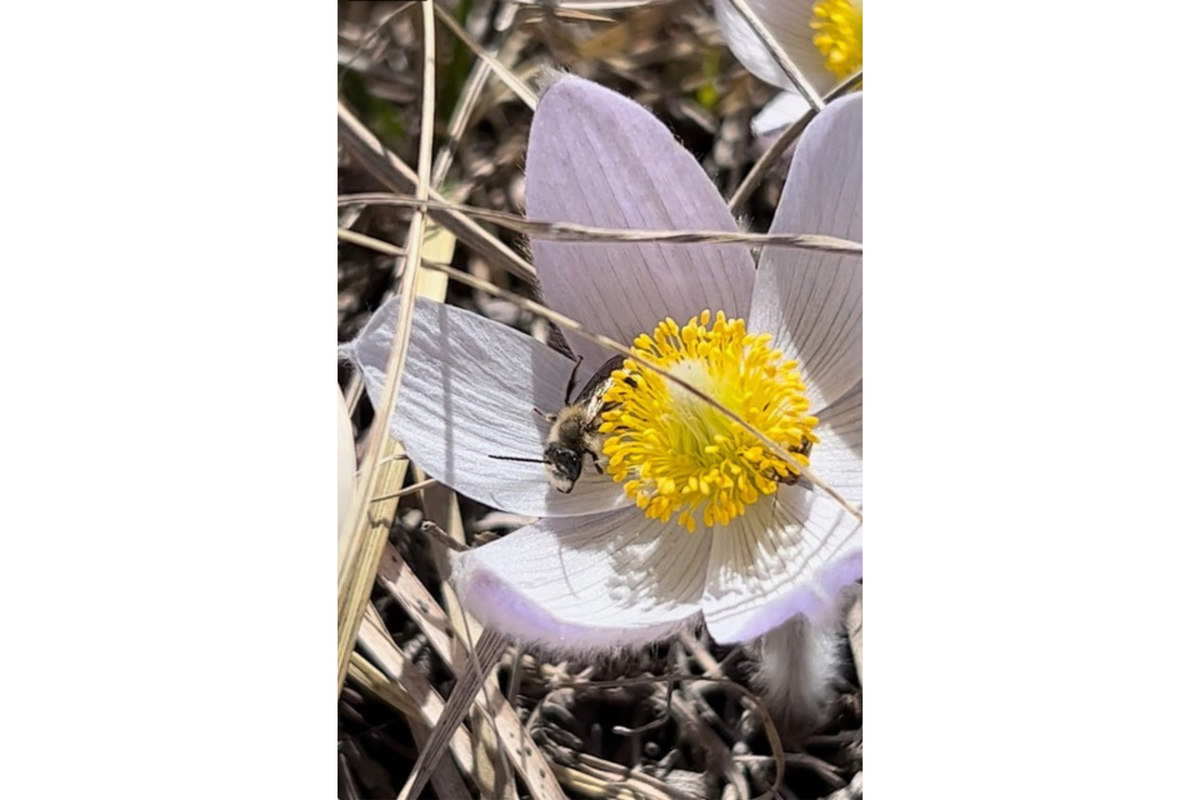'The Connection Cure' dives into biophilia, forest bathing
"To stop the mental loop of stress about stress, science says our best bet is to get out of our heads and get outside," writes Julia Hotz in her book 'The Connection Cure.'

"The Connection Cure: The Prescriptive Power of Movement, Nature, Art, Service, and Belonging"
By Julia Hotz
If we now know stress, according to the World Health Organization (WHO), is “a state of worry or mental tension caused by a difficult situation,” what happens when the “difficult situation” seems permanent? How can a person withstand mental tension indefinitely?
In the 1980s, the Japanese government became interested in these questions when reports of heart failure, stroke, and suicide cropped up among its workforce. It began shortly after a period historians called the “Japanese economic miracle,” a situation initially far from difficult. After World War II obliterated its industrial capacity, Japan spent three decades working hard and fast to reinvent its national identity around building a world-renowned tech sector. After playing catchup in an economy that had few of its own natural resources, this was Japan’s chance to “go big or go home,” and by many metrics, it succeeded. In just twenty-five years, Japan became the world’s third-largest economy. In just five years, its industrial capital stock doubled, and Japan became the world’s leading exporter of consumer electronics.
But that growth came at a cost: Japanese workers began to give up sleep, weekends, and social time. By 1988, according to a labor force survey, more than eight million of its employees were working more than sixty hours a week. Unable to keep up with the nonstop hustle, some workers got sick, and others started to literally die. In 1978, their deaths coined a new medical term, karoshi — meaning death by overwork. Another new medical term described an even more disturbing trend: karo jisatsu, or suicide from overwork.
It would have been easy for Japan’s doctors to tell their patients, “Just stop being stressed." But the “difficult situation” of overwork seemed inescapable. The government tried to pass laws limiting office hours and establishing weekend systems, but both employers and employees dodged them. Then the Ministry of Agriculture, Forestry and Fisheries had a very different idea: if the cities’ hustle-bustle, nonstop-work culture was producing stress, maybe the opposite environment—Japan’s sixty-two million acres of rural, tranquil forests—could reverse it. Maybe the government couldn’t change their workers’ workload, but it could change the workers’ environment.
In 1982, the ministry created a campaign around this very idea. They called it shinrin-yoku, a concept that translates in English to “forest bathing.” Far from a literal bath (clothes on, buddy), shinrin-yoku is a metaphor, inviting “bathers” to slow down and take the time to absorb the forest’s natural wonders with all five senses. For the new problems of Japan’s new environment, shinrin-yoku was an old solution, rooted in the nation’s age-old Shinto and Buddhist traditions.

It sounded like a lovely stress antidote, but it hadn’t been proven. “It was a feeling, not a science; there was no evidence,” says Qing Li, a doctor and professor of rehabilitation medicine in Tokyo. Li had seen plenty of studies showing how stress impairs immune function by reducing the body’s count of natural killer (NK) cells, the kind of white blood cells needed to fight everything from common cold viruses to cancer. But he hadn’t seen studies showing what sort of medicines could reverse the body’s immune response to stress. Could forest bathing be one of them?
In 2005, Li pursued that very question, taking twelve middle-aged businessmen (a.k.a. walking stress balls) out to the deep woods for a shinrin-yoku experience. To isolate the effect of the forest bath, he controlled for other variables, like their diet and exercise levels, to observe what happens to our bodies when we simply forest bathe. Three days later, Li was astounded by the results: compared with their prebath blood samples, the forest bathers significantly increased their production of NK cells and proteins. All but one of the subjects increased their NK activity by nearly 50 percent. Li realized the forest wasn’t just “a feeling”; it was medicine. And it was especially powerful to “treat” the symptoms of stress.
Later studies with different demographics showed forest bathers reaped other benefits, too. Among other health gains, they decreased their production of stress hormones like adrenaline, noradrenaline, and cortisol. They increased their production of the mood-boosting chemical serotonin. They reduced their blood pressure and heart rate. And according to self-reports, they experienced less anxiety, depression, anger, fatigue, and confusion. A landmark study of twenty-four forests in Japan, comparing time walking in the woods with time in city environments, showed that forest bathers had lower sympathetic nervous activity (associated with fight-or-flight responses) and higher parasympathetic nervous activity (associated with rest).
Today, there exists an enormous body of evidence behind forest medicine. But the evidence alone didn’t answer a big question: Why? What specifically makes the forest a stress medicine?
Japan was far from the first place to consider nature medicinal. In mid-nineteenth-century America, as the public became enamored with the “new” allure of materialism, a group of philosophers built a countermovement around the age-old allure of nature, called transcendentalism. Walt Whitman captured this in his 1855 poetry collection, Leaves of Grass, advising readers to “love the earth and sun and the animals, despise riches.” George Washington Carver, the famed peanut farmer, called nature “an unlimited broadcasting station, through which God speaks to us every hour if we will only tune in.” And Ralph Waldo Emerson, chief among the transcendentalists, perhaps put it best in his classic essay “Nature”: “In the woods is perpetual youth. . . . There, I feel that nothing can befall me in life. Standing on the bare ground—my head bathed by blithe air and uplifted into infinite space—all mean egotism vanishes.”
But for all the writers’ elegant poetry and prose, nobody seemed to understand why nature was so powerful until a century later, in 1984, when the late American naturalist E. O. Wilson coined the term biophilia to describe our “innate tendency to focus on life and lifelike processes.” In his eponymous book, Wilson outlines how there’s something about nature that we intuitively love. Like movement, some of this comes from evolution; if you were trying to make it in the big, bad wild, it was probably adaptive to be able to pay attention to your environment, like which trees offered food or which waters had fish. But beyond just surviving, Wilson’s book suggests nature helps us thrive, too — as a source of “spirit” and “hope.”
Plenty of studies have since shown Wilson’s “biophilia” hypothesis holds empirical ground. In 2009, a review of fifty studies found visual contact with nature has a positive effect on our health and well-being, and “the lack of nature can have a negative effect . . . even in individuals who do not express any appreciation for plants and nature.” A 2019 review focused on urban green space similarly found “consistent negative association between urban green space exposure and mortality, heart rate, and violence, and positive association with attention, mood, and physical activity.”

Meanwhile in 1984, the same year E. O. Wilson published Biophilia, psychologist Roger Ulrich inadvertently demonstrated our biophilic tendencies when he studied the recovery periods of patients who had received gallbladder-removal surgeries. Gathering ten years of hospital records, Ulrich compared the patients across one condition: whether their rooms overlooked a “natural setting” or a brick wall. Sure enough, Ulrich found, the nature-viewing patients recovered more quickly, took fewer painkillers, and had less negative feedback from nurses than those with the brick view. (If you’ve got nature in or near your hospital room, you can probably thank Roger Ulrich.)
A more recent experiment used brain scans to dig deeper. In it, thirty-eight subjects were instructed to go for a ninety-minute walk; half walked through “a grassland with scattered oak trees and shrubs,’’ and half walked along a highway with “a steady stream of traffic.” Here again, biophilia won; compared with the highway walkers, nature walkers had less activity in their subgenual prefrontal cortex, the part of the brain associated with rumination, or “repetitive thought focused on aspects of the self.” Another study comparing thirty-minute nature and city walks found the same; not only did nature walkers significantly reduce their ruminative thinking and negative mood, but they also elicited more “awe,” defined in the study as “a state of wonder and amazement that directs attention away from the self and towards the environment.”
It’s easy to understand the vicious cycle that these studies make plain: if our environments remind us of our stressors, we’re left to ruminate on the reasons that we have those stressors in the first place. We waste the hours we could have spent tackling our to-do lists by ruminating about the endlessness of our to-do lists. In other words, we become stressed about our stress, and our minds and bodies pay the price.
But to stop the mental loop of stress about stress, science says our best bet is to get out of our heads and get outside. There, instead of ruminating on problems of “the self,” we find ourselves wondering about the infinitely amazing natural world.
Excerpt from THE CONNECTION CURE by Julia Hotz.
Copyright © 2024 by Julia Hotz. Reprinted by permission of Simon & Schuster, NY.
